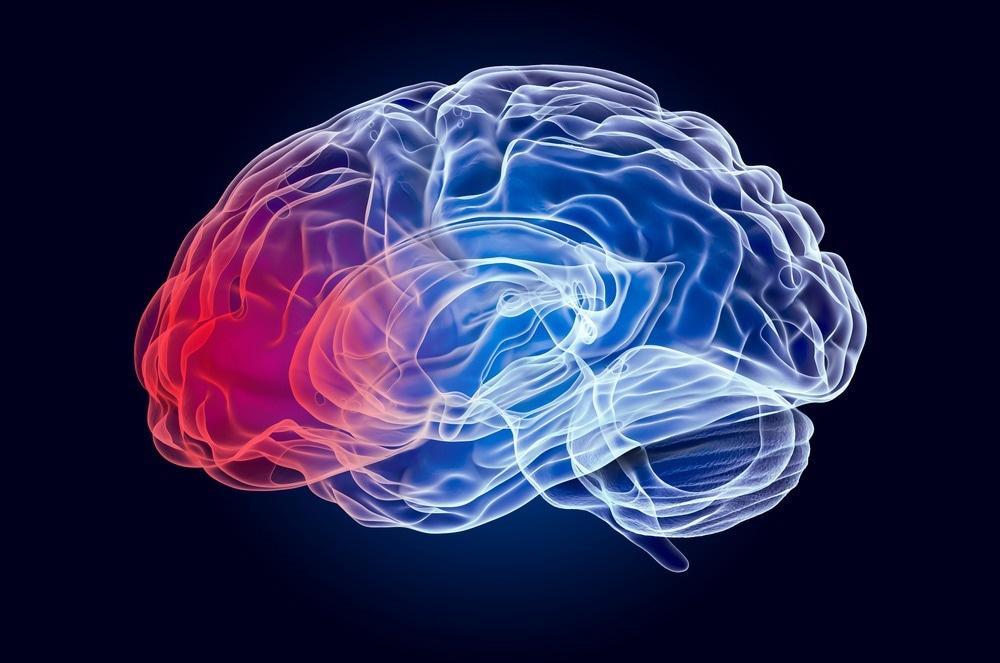Traumatic brain injury results from sudden external or physical assault damaging the brain, focusing on one or more brain areas. Although traumatic brain injury is life-threatening, there are no long-term treatments currently available.

Study: Porous Silicon Nanoparticles Targeted to the Extracellular Matrix for Therapeutic Protein Delivery in Traumatic Brain Injury. Image Credit: AlexLMX/Shutterstock.com
Despite the promising therapeutic activity of brain-derived neurotrophic factor (BDNF), a neurogenesis-promoting protein, its systematic delivery to the brain tissue is challenging due to its instability in blood, short half-life in circulation, and poor transport into the brain.
An article published in the journal Bioconjugate Chemistry discussed loading BDNF protein into biodegradable porous silicon nanoparticles to deliver the bioactive protein into injured brain tissues. The synthesized silicon nanoparticles were modified with the ligand CAQK, a peptide that targets and binds to extracellular matrix (ECM) components of the brain, upregulated after traumatic brain injury. The BDNF protein retains its biological activity after its release from silicon nanoparticles.
The administration of BDNF-loaded CAQK-modified silicon nanoparticles after injury resulted in the effective delivery of BDNF protein, reducing the lesion volumes to a greater extent than free BDNF. Thus, proving the hypothesis that the silicon nanoparticles mediate therapeutic protein delivery is more effective than free protein in improving outcomes in traumatic brain injury.
BDNF for Treating Traumatic Brain Injury
The currently available treatments for traumatic brain injury are restricted to painkillers and do not cure any underlying disease complications, leading to long-term behavioral, physical, and psychosocial disorders in patients.
After the initial traumatic brain injury, the secondary injury path evolves over a few days, with the developing pathophysiology through a series of cellular and biochemical processes, ultimately leading to cell death. While the primary injury can only be prevented, the secondary injury path has main prospects for therapeutic treatment to preserve brain tissue.
BDNF plays a crucial role in neuronal survival and growth. It is a neurotransmitter, modulator, and participates in neuronal plasticity, which is important for learning and memory. BDNF is widely expressed in the central nervous system (CNS), gut, and other tissues. It has a high affinity toward the receptor tyrosine kinase B (TrkB) and activates signal transduction cascades, enhancing the expression of anti-apoptotic proteins.
Brain-derived neurotrophic factor regulates glucose and energy metabolism and prevents exhaustion of beta (β) cells. Decreased levels of BDNF are related to neurodegenerative diseases with neuronal loss (Parkinson’s disease, Alzheimer’s disease, multiple sclerosis, and others).
Porous silicon nanoparticles are applied in various fields, like catalysis, imaging, and biomedical applications, due to their large specific surface area, easily modifiable surface chemistry, biocompatibility, and biodegradability. For biomedical applications, it is critical to precisely control the surface modification of porous silicon-based materials and quantify the functionalization density, which determines the behavior of nanoparticles within the biological system.
Treating Traumatic Brain Injury with CAQK-Modified Porous Silicon Nanoparticles
Treating traumatic brain injury patients involves the removal of blood clots through surgical intervention, relieving the intracranial pressure since the brain is inaccessible to therapeutics. Alternatively, the damaged blood-brain barrier (BBB) in traumatic brain injury patients can deliver therapeutic materials, leading to their accumulation in the brain.
However, most of the administered drug materials are excluded from the brain in 6 hours due to the re-establishment of BBB, highlighting the need for brain targeting strategies with increased penetration and retention of therapeutic materials.
Previous studies mentioned that the CAQK-modified porous silicon nanoparticles served as potential cargos in delivering small interfering RNA (si-RNA) to the brains in a traumatic brain injury model after their intravenous administration. This approach led to the exploitation of transient damaged BBB in traumatic brain injury patients, allowing the passive accumulation of therapeutic nanoparticles into brain tissue for their binding and retention, which is accessible by brain ECM.
The present study explored protein loading and peptide-mediated targeting of brain ECM in traumatic brain injury brain. Here, the BDNF protein was loaded into porous silicon nanoparticles with 13% loading efficiency and the nanoparticles were surface modified with CAQK peptide to target the injury. In addition to CAQK, the exterior of the nanoparticles was also encapsulated with polyethylene glycol (PEG).
Fluorescently tagged model protein was used in a controlled cortical impact (CCI) mouse model of traumatic brain injury to confirm their accumulation at the target site. After administering BDNF-loaded CAQK-modified silicon nanoparticles, 2 hours post-injury, they reduced the brain lesion volume by approximately 24% compared to the free BDNF. Thus, the present work demonstrated the potential of chemically modified porous silicon nanoparticles in targeting the injured brain.
Conclusion
To summarize, the present work demonstrated the fabrication of peptide-targeting porous silicon nanoparticles to address the challenges in treating traumatic brain injury. The fabricated porous silicon nanoparticles could accommodate about 13% by mass of BDNF protein, which was subsequently released from the pores of nanoparticles to exhibit its bioactivity.
The systematic administration of designed nanoparticles into a mouse model of traumatic brain injury led to a reduction in brain lesion volumes which was substantially significant compared to free BDNF. The results of this study revealed the potential of targeted BDNF delivery using nanoparticles in traumatic brain injury and other CNS injuries.
Moreover, due to the tunability of pore size and versatile chemistry, porous silicon nanoparticles serve as a promising platform to address multi-factorial causes of traumatic brain injury disease pathology.
Reference
Waggoner, L.E et al. Porous Silicon Nanoparticles Targeted to the Extracellular Matrix for Therapeutic Protein Delivery in Traumatic Brain Injury. Bioconjugate Chemistry. https://pubs.acs.org/doi/10.1021/acs.bioconjchem.2c00305
Disclaimer: The views expressed here are those of the author expressed in their private capacity and do not necessarily represent the views of AZoM.com Limited T/A AZoNetwork the owner and operator of this website. This disclaimer forms part of the Terms and conditions of use of this website.